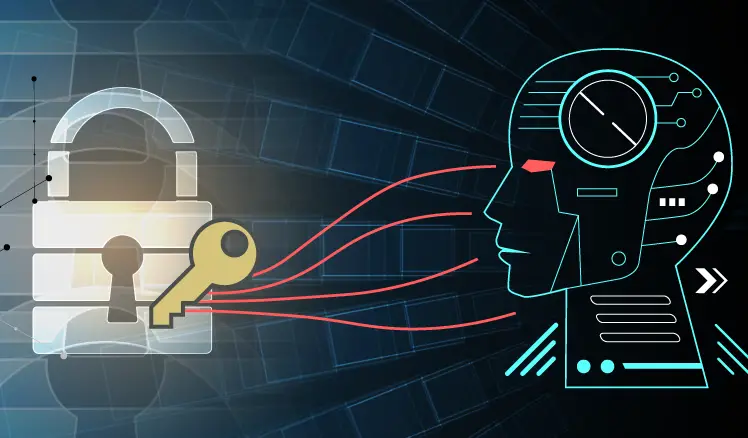In an era dominated by digital technology, cybersecurity has emerged as a paramount concern. As businesses, governments, and individuals rely heavily on interconnected systems, the threat landscape has grown exponentially. Traditional cybersecurity methods alone are no longer sufficient to combat the sophisticated and relentless attacks.
Enter Artificial Intelligence (AI), a game-changing force in the realm of cybersecurity. AI leverages machine learning algorithms to detect, analyze, and prevent cyber threats with unprecedented speed and accuracy.
Embarking on a Cybersecurity career? Check out this list of Cybersecurity Programming Languages to fortify defenses and combat cyber threats effectively.
The Power of AI
AI empowers cybersecurity by processing colossal amounts of data in real-time, identifying patterns, and predicting potential threats. It augments human capabilities, providing security teams with valuable insights, helping them stay one step ahead of cybercriminals.
Machine Learning
Machine learning allows AI systems to learn from historical data, making them adaptive and self-improving. These AI models can spot anomalies and identify new types of threats, even without prior knowledge.
Behavioral Analysis
AI-driven cybersecurity focuses on behavior rather than relying solely on pre-defined signatures. This approach helps in detecting previously unseen threats, making it harder for attackers to infiltrate systems.
Here’s an example of how AI can be utilized for behavioral analysis:
import pandas as pd
from sklearn.ensemble import IsolationForest
# Load network traffic data
data = pd.read_csv("network_traffic.csv")
# Extract features for analysis
features = data[['source_ip', 'destination_ip', 'protocol', 'data_volume']]
# Train the Isolation Forest model
model = IsolationForest()
model.fit(features)
# Predict anomalies
anomalies = model.predict(features)
Automated Incident Response
AI can automatically respond to attacks, mitigating damage and reducing response time significantly. It enables real-time threat containment and safeguards crucial data and systems.
Here’s a basic example of automated incident response using AI:
# AI-powered incident response module
def automate_response(threat_type):
if threat_type == 'malware':
# Isolate infected system from the network
isolate_infected_system()
elif threat_type == 'DDoS':
# Redirect traffic to DDoS protection service
redirect_traffic_to_DDoS_protection()
else:
# Log and investigate other types of threats
log_and_investigate(threat_type)
# AI-based threat classification
threat_type = classify_threat(threat_data)
# Automated incident response based on threat type
automate_response(threat_type)
Real-time Threat Detection
AI’s ability to analyze vast datasets enables proactive threat hunting. It can identify hidden vulnerabilities and weaknesses within a network, closing potential entry points before attackers exploit them.
It provides an advantage over traditional rule-based systems.
Let’s see a simple code snippet for real-time threat detection using AI:
import requests
# AI-powered threat detection API endpoint
api_url = "https://ai-threat-detection.com/api/detect"
def detect_threat(payload):
response = requests.post(api_url, json=payload)
if response.status_code == 200:
return response.json()['is_threat']
else:
return False
# Real-time data from network traffic
payload = {
"source_ip": "192.168.1.100",
"destination_ip": "203.0.113.10",
"protocol": "TCP",
"data_volume": 1024
}
# Detect threats using AI-powered API
if detect_threat(payload):
print("Potential threat detected!")
else:
print("No threat found.")
Continuous Learning and Adaptation
AI systems continuously learn and adapt to new threats, making them resilient against evolving attack vectors.
Let’s see a code snippet for continuous learning using online machine-learning techniques:
from sklearn.linear_model import SGDClassifier
# Initialize online learning model
model = SGDClassifier(loss='hinge', alpha=0.01, learning_rate='optimal')
# Continuous learning with incoming data
def update_model(new_data, labels):
model.partial_fit(new_data, labels, classes=[0, 1])
# New data received from network traffic
new_data = get_new_data()
labels = get_labels()
# Update model with new data
update_model(new_data, labels)
Reducing False Positives
AI minimizes false positives, sparing cybersecurity teams from chasing non-existent threats and allowing them to concentrate on genuine risks.
Challenges
Despite its tremendous potential, AI-powered cybersecurity faces challenges. One such concern is the ethical use of AI. Ensuring privacy and data protection while employing AI for cybersecurity is crucial.
Moreover, the ever-evolving nature of cyber threats means AI models must be continuously updated and trained to maintain their effectiveness.
Collaboration
The future of AI-powered cybersecurity lies in collaboration. Organizations and governments must pool their resources, share threat intelligence, and work together to create a robust cybersecurity ecosystem.
AI and Human Synergy
AI is a potent ally, but human expertise remains irreplaceable. The combination of AI and human analysis leads to a formidable defense against cyber threats.
Conclusion
As cyber threats grow in scale and sophistication, the integration of AI in cybersecurity becomes imperative. The future of defense lies in harnessing AI’s potential to adapt, predict, and counter threats in real-time. By embracing AI-powered cybersecurity and fostering collaboration, we can pave the way for a safer digital world. The ongoing evolution of AI will undoubtedly revolutionize the cybersecurity landscape, making it more resilient and capable of defending against emerging threats.
